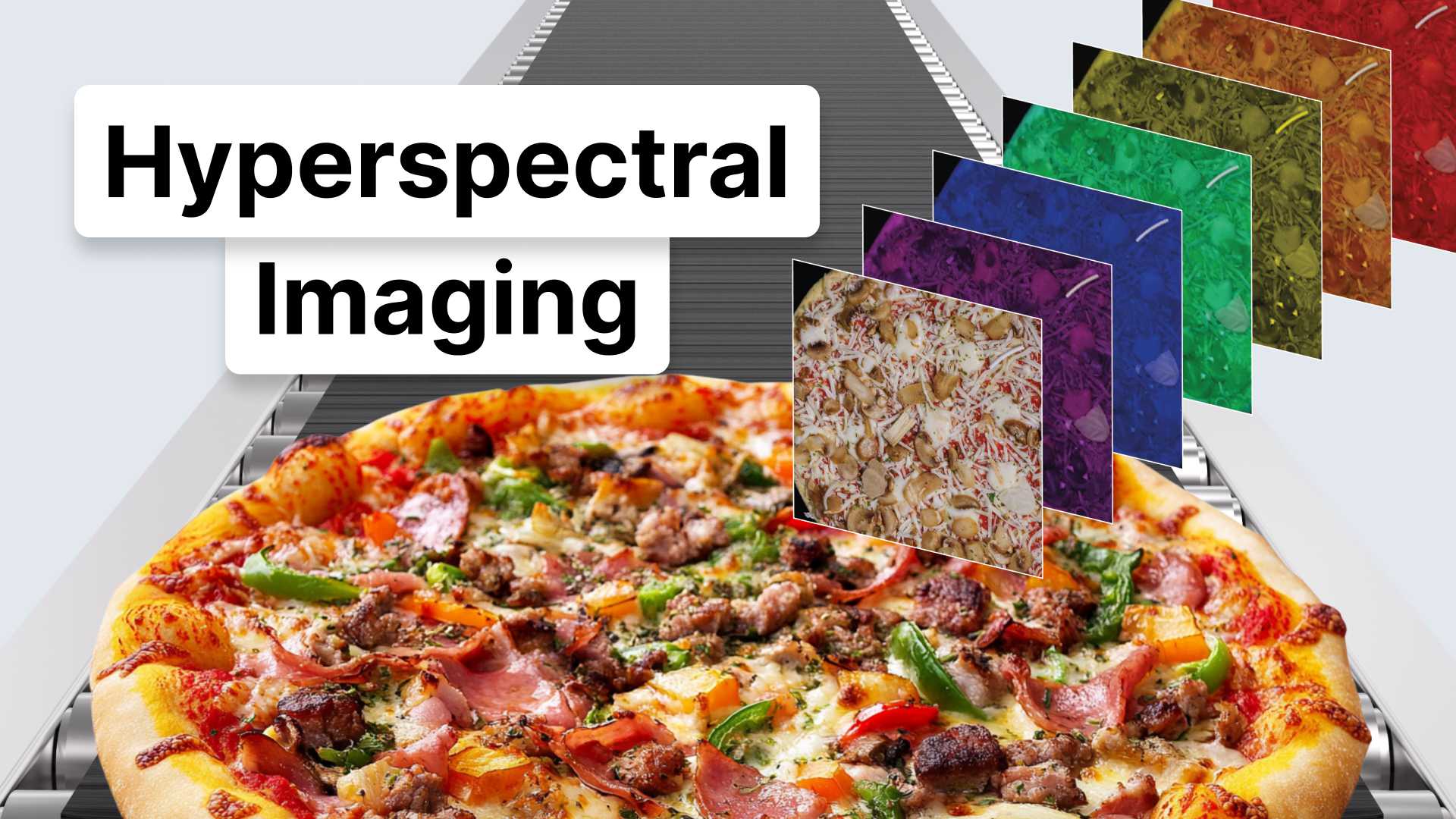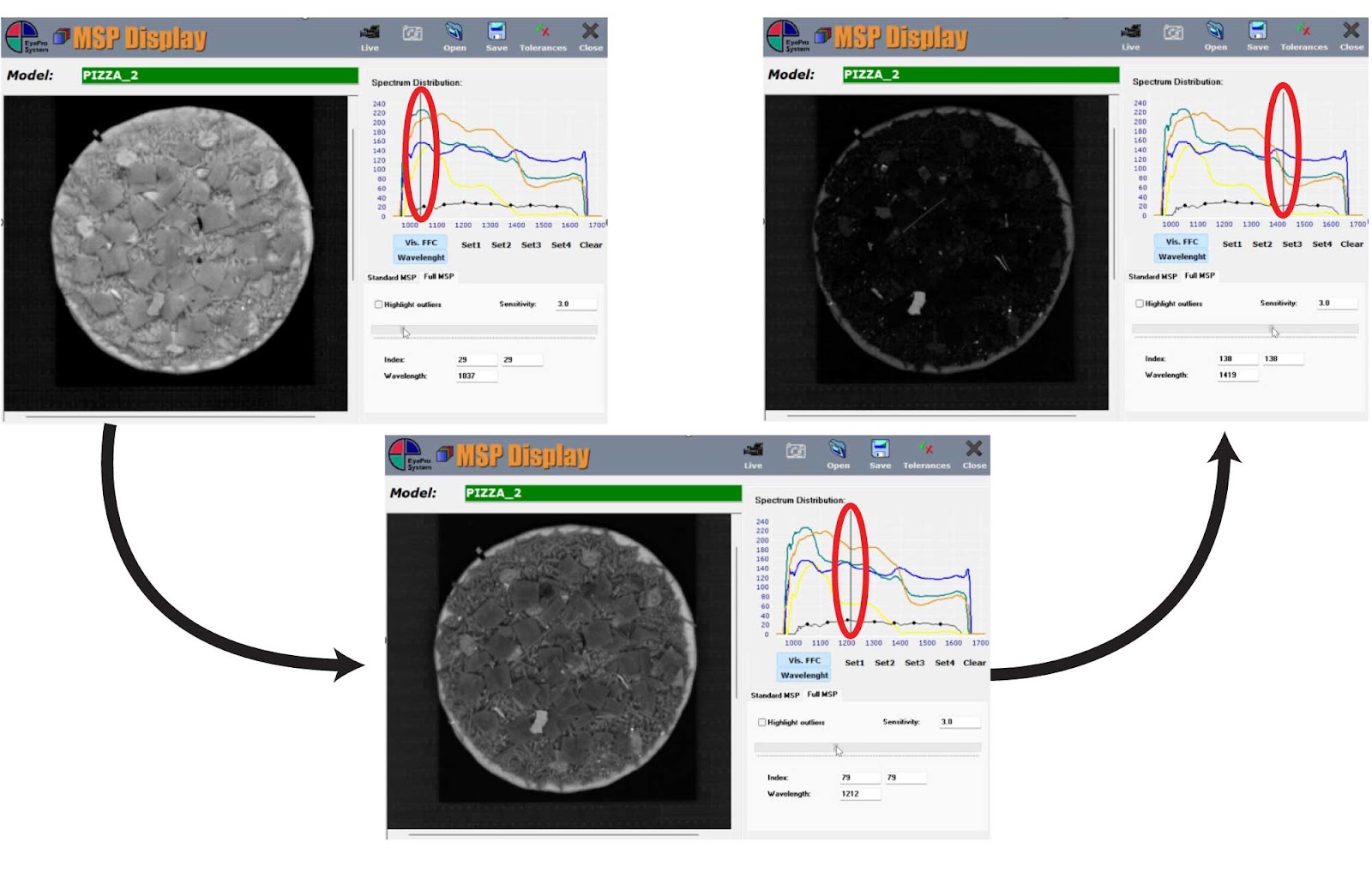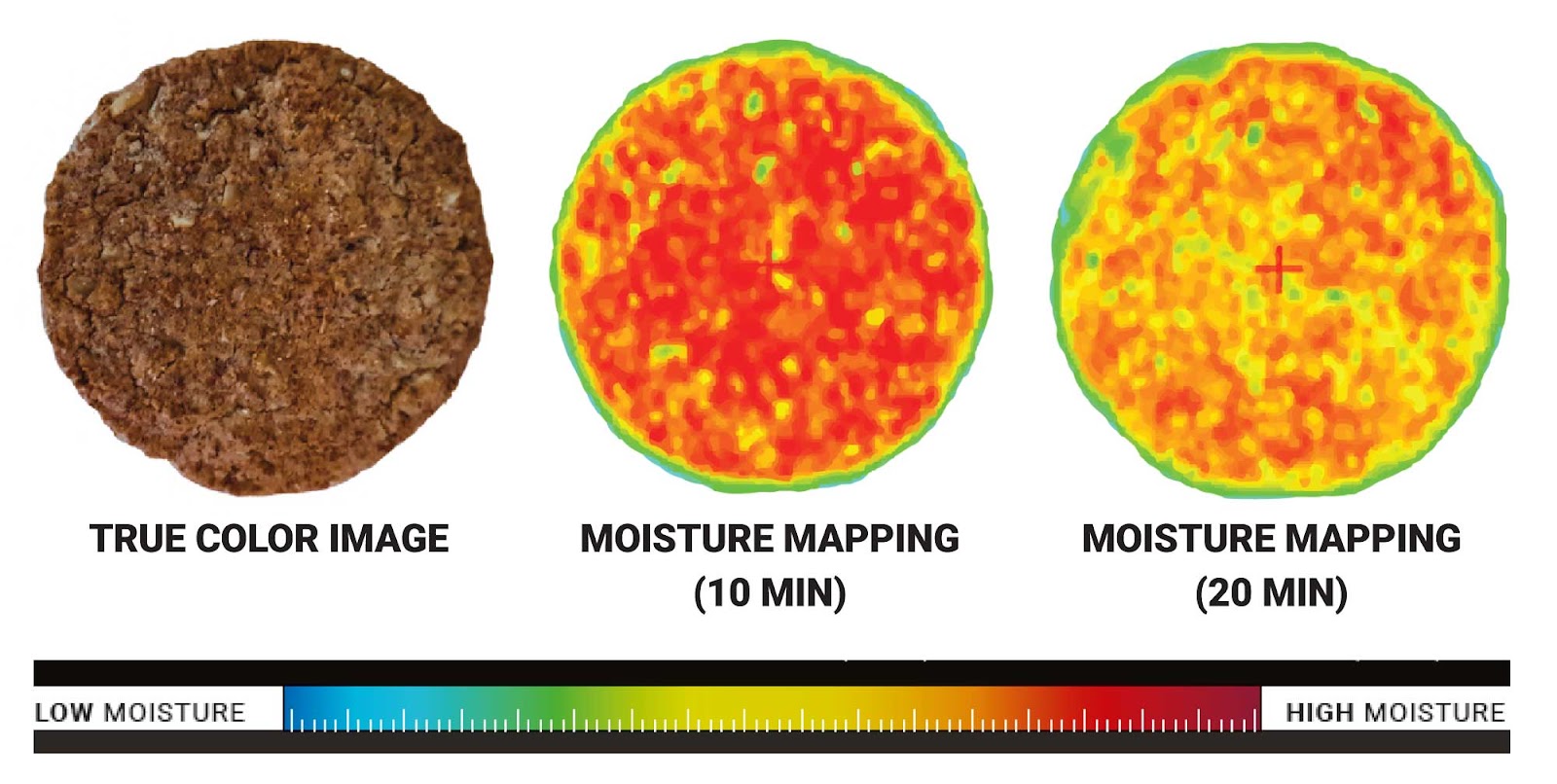How is Hyperspectral Imaging Used in Food Processing?

Hyperspectral imaging technologies have revolutionized how food manufacturers inspect, grade, and control quality on the food processing line. Hyperspectral imaging combines lab-level insights into real-time production, from ensuring safe and sanitary processing environments to boosting efficiency and quality. From baked goods to processed meats, hyperspectral imaging has expansive applications throughout the food industry.
What is Hyperspectral Imaging?
Hyperspectral imaging is an advanced inspection technology that captures an expansive array of wavelengths across the electromagnetic spectrum, far beyond the visible.
Unlike a standard color camera that sees red, green, and blue, hyperspectral imaging cameras capture hundreds of narrow spectral bands to develop their image. This process essentially creates a "spectral fingerprint" for every pixel of the image, allowing it to detect chemical composition, surface defects, and physical contaminants, all without touching or altering the product or interrupting process flow.
At KPM Analytics, our Multi-Eye Hyperspectral Imaging Technology for the baking industry offers critical quality control applications to manage product consistency, including:
- Advanced moisture measurement and moisture mapping distribution
- Advanced foreign body detection and classification.
But before discussing hyperspectral imaging applications, let's review the components of a hyperspectral system and how they work together.

How Does Hyperspectral Imaging Work?
Most hyperspectral food inspection systems include these four core components:
- A light source, commonly either halogen or LED-based
- A hyperspectral camera
- A spectrograph to disperse the light into its spectral components
- A software platform to process and classify the data in real time
As food products progress along a conveyor belt, the system captures continuous hyperspectral “cubes” consisting of 3D data (width, height, and wavelength). Algorithms – many powered by artificial intelligence (AI) software applications – analyze this data to detect physical contamination on the product, measure moisture, fat, or protein content, and apply objectivity to measure subjective quality parameters like ripeness.
Multispectral vs Hyperspectral: What’s the Difference?
A common debate in the industry is whether multispectral or hyperspectral imaging is better, but the technologies are similar. Multispectral imaging selects multiple but specific wavelengths to target known materials. However, hyperspectral imaging delivers much deeper insights by analyzing the full wavelength spectrum, thereby uncovering more “unknowns” and detailed differences in the processor’s unique product line.
Multispectral imaging is a good entry into hyperspectral imaging at a lower price point, but its truncated data does not provide as complete a picture as hyperspectral imaging.
Why the Food Industry Uses Hyperspectral Imaging
In addition to being a minimally invasive inspection method, the food industry has adopted hyperspectral imaging combined with machine-based vision inspection technologies to enable powerful quality and food-safety applications. These include:
- Physical contamination, especially objects that may look quite similar to the product and are not clearly discernible by the naked eye.
- The moisture, fat, and protein analysis of baked goods, meat products, snack foods, and more.
- Ripeness and bruise detection in fruits and vegetables

Hyperspectral imaging integrated with a vision inspection technology has helped food processors:
- Reduce recalls by detecting foreign materials easily missed by operators.
- Maintain brand quality by ensuring consistent, wholesome food products.
- Meet increasingly strict food safety standards while also demonstrating a commitment to quality and food safety to customers.
How Does Hyperspectral Imaging Work with Vision Inspection Technologies?
Hyperspectral integrates with AI and rule-based vision inspection systems to provide an in-depth food product inspection solution. It bridges the gap between visual inspection and chemical analysis, delivering richer insights than either technology alone.
What Could Hyperspectral Imaging Do for Your Food Production Process?
Whether your primary need is to improve food safety, product consistency, or to unlock deeper insight from your production line, hyperspectral imaging amplifies all. Contact us today to discuss how hyperspectral solutions from KPM Analytics can transform your quality assurance process and drive measurable results from day one.
Other Posts in the Series
Related Blog Posts
















